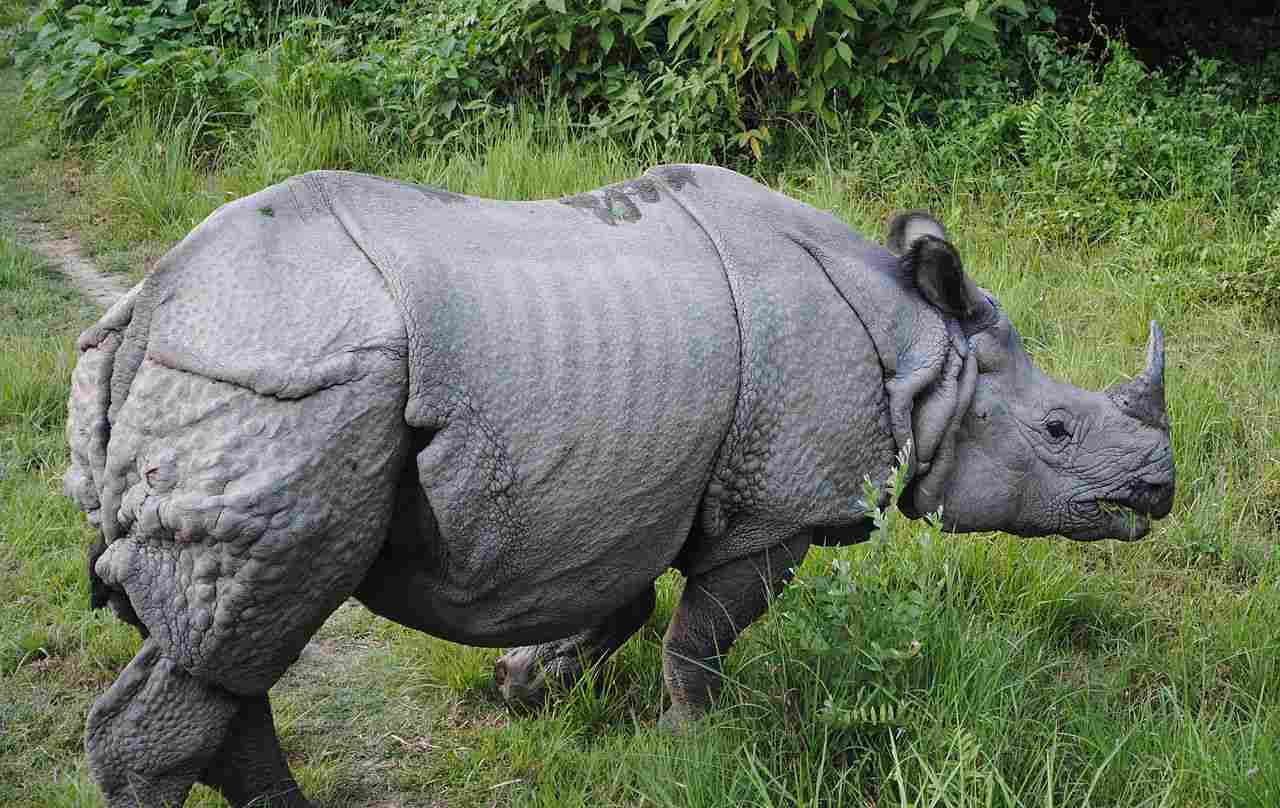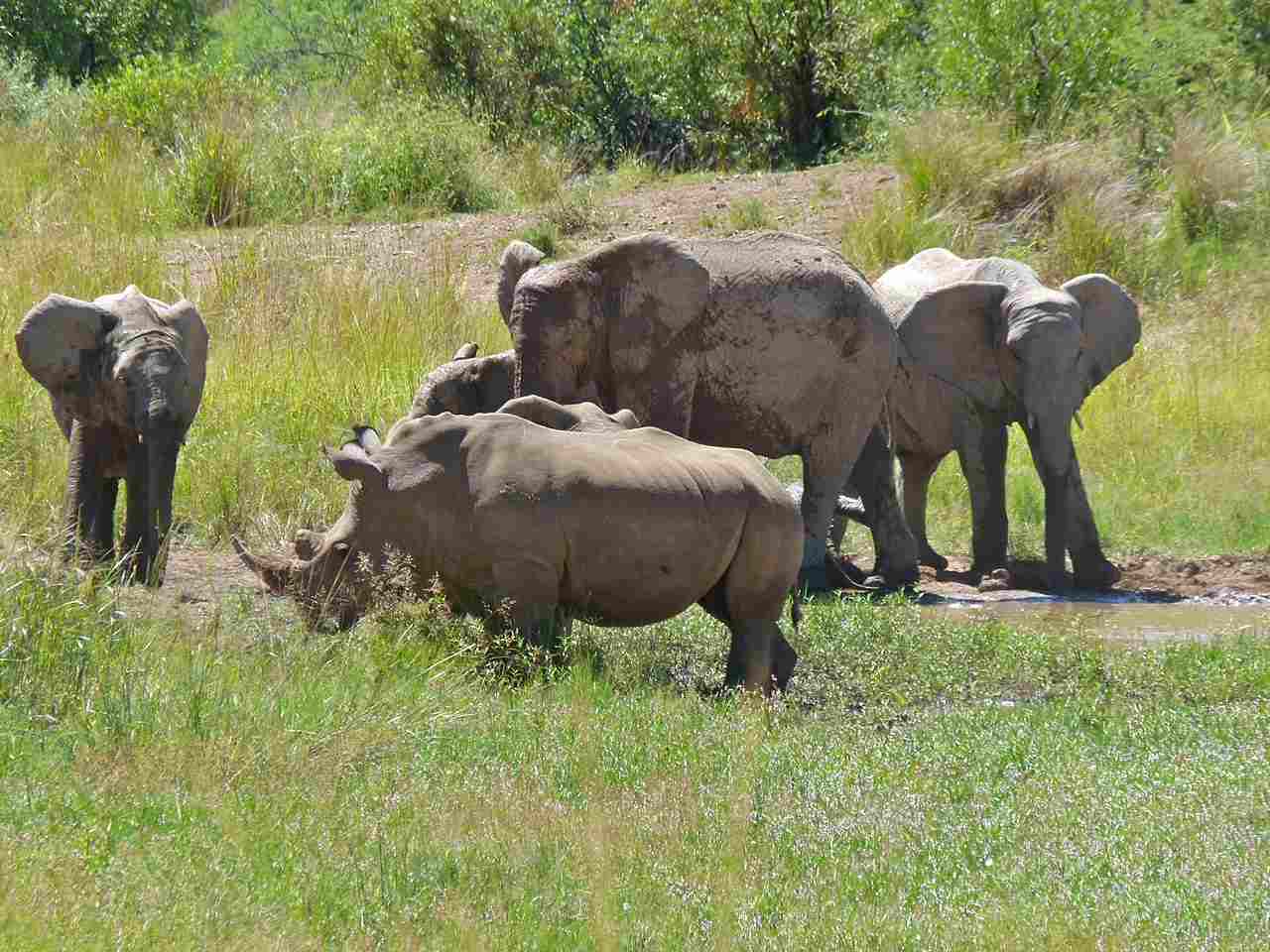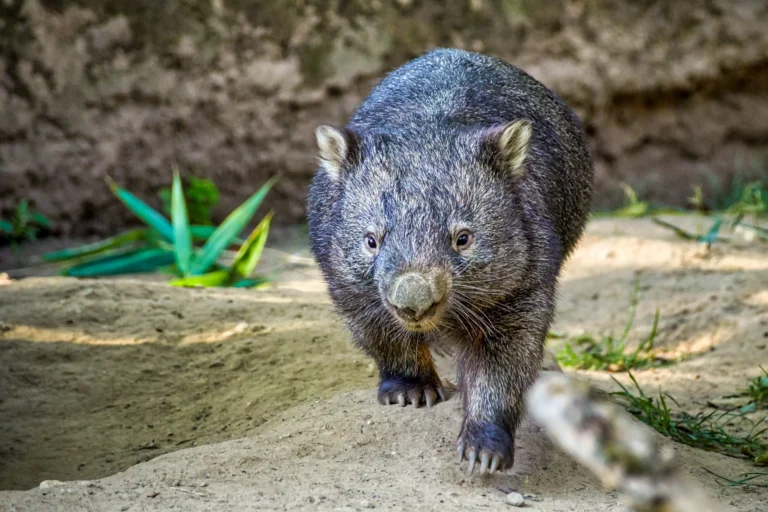Rhino Vs Tiger Size, Weight, Ecological Comparison
The Rhino’s superior weight, size, and strength give it a significant advantage over the Tiger. With its powerful tusks and body armor, the Rhino can easily defeat and kill the Tiger. While the Tiger may be able to cause some damage to the Rhino, it can only target areas like the abdomen or rump where the skin is slightly thinner. The Rhino’s overall physical capacity makes it a formidable opponent for the Tiger.
This article compares both animals using a variety of factors.
Key Outcomes
*Biological Comparison
Rhinos and tigers may seem similar in some ways, but they are not biologically related. Rhinos belong to the family Rhinocerotidae, while tigers belong to the family Felidae. Despite this, there are still interesting biological comparisons to be made between these two animals.
*Size and Weight Comparison
Rhinos and tigers differ significantly in terms of size and weight. When it comes to size, rhinos are generally larger than tigers. The average height of a rhino can range from 4.5 to 6 feet at the shoulder, while tigers typically measure around 3 to 3.5 feet. In terms of weight, rhinos are much heavier than tigers.
Adult rhinos can weigh anywhere between 1,500 to 6,000 pounds, whereas tigers weigh around 200 to 670 pounds. This stark contrast in size and weight highlights the physical differences between these two animals.
*Physical Capability Comparison
On average, rhinos are far stronger than tigers, due to their size and weight advantages.
When comparing the physical capabilities of rhinos and tigers, it’s important to consider their size, weight, and overall power. Rhinos are larger and heavier, while tigers are known for their agility and strength.
Rhinos have impressive strength due to their massive size, allowing them to charge at high speeds and use their horns for defense. Tigers, on the other hand, are incredibly agile and have powerful muscles, enabling them to pounce on their prey with precision.
1). Taxonomy
The taxonomy of rhinos and tigers reveals interesting differences between these two animals. Rhinos belong to the family Rhinocerotidae and are further classified into five extant species: the White Rhino, Black Rhino, Indian Rhino, Javan Rhino, and Sumatran Rhino. Tigers, on the other hand, belong to the family Felidae and are classified into six subspecies: the Bengal Tiger, Siberian Tiger, Indochinese Tiger, Malayan Tiger, South China Tiger, and Sumatran Tiger.
When comparing the taxonomy of these animals, it is evident that rhinos have a more diverse range of species compared to tigers. This diversity is a testament to the adaptability and resilience of rhinos in various habitats. Tigers, on the other hand, have a narrower range of subspecies, each with its own unique characteristics and distribution.
2). Appearance
Starting with their coats, rhinos have thick, tough skin that is often gray in color. This skin provides them with protection against the elements and potential predators. Tigers, on the other hand, have a beautiful fur coat with distinctive patterns, such as stripes, which serve as camouflage in their natural habitats.
In terms of stature and build, rhinos are known for their large, robust bodies. They have a stocky build with short legs and a massive head, giving them a formidable presence. Tigers, on the other hand, are more sleek and agile. They have a slender body with long legs, allowing them to move swiftly and silently through their environments.
When comparing the appearance of these animals, it is clear that they have evolved distinct physical characteristics to suit their respective lifestyles. Rhinos’ tough skin and sturdy build make them well-suited for their terrestrial habitats, while tigers’ striped fur and agile bodies enable them to blend in and navigate their forested surroundings.
3). Size
Generally, rhinos are larger than tigers.
Rhinos are known for their massive size, with some species reaching lengths of up to 13 feet and standing at a towering height of 6 feet at the shoulders. These majestic animals can weigh anywhere from 1,500 to 6,000 pounds, depending on the species.
On the other hand, tigers are slightly smaller in comparison. While their length can vary between 6 to 10 feet, they typically stand at a height of around 3 to 4 feet at the shoulders. Tigers are generally lighter than rhinos, with weights ranging from 200 to 700 pounds.
The contrasting sizes of these animals reflect their different ecological adaptations. The large size of rhinos allows them to dominate their terrestrial habitats and defend themselves against potential threats. Tigers, on the other hand, have a more agile and stealthy nature, which is facilitated by their smaller size. This enables them to navigate through dense forests and hunt their prey with precision.
4). Weight
When comparing the weight of rhinos and tigers, it is evident that rhinos are significantly heavier than tigers. Rhinos can weigh anywhere from 1,500 to 6,000 pounds, depending on the species, while tigers generally weigh between 200 to 700 pounds. This stark difference in weight is a result of their distinct ecological adaptations and lifestyles.
The substantial weight of rhinos is a testament to their dominance in their terrestrial habitats. Their sheer size allows them to intimidate potential threats and defend themselves effectively. Rhinos have evolved to be formidable creatures, capable of withstanding attacks from predators and even charging at full speed when necessary.
On the other hand, tigers’ lighter weight is advantageous for their agile and stealthy nature. Their ability to navigate through dense forests and hunt with precision is facilitated by their smaller size. Tigers rely on their speed and agility to chase down prey, utilizing their muscular bodies and powerful limbs to pounce and capture their target.

5). Bite Force
Rhinos have a higher bite force than tigers on average.
When comparing the bite force of rhinos and tigers, it is important to consider the unique adaptations and hunting strategies of each species. Rhinos, with their massive size and powerful jaws, possess an impressive bite force that allows them to crush through tough vegetation and defend themselves against potential threats. Their bite force is estimated to be around 2,000 pounds per square inch (psi), making them capable of inflicting severe damage.
On the other hand, tigers may not have the same level of bite force as rhinos, but they possess sharp, retractable claws and long canine teeth that are designed for gripping and tearing prey. While the exact bite force of tigers is not well-documented, it is believed to be around 1,000 psi, which is still formidable.
The difference in bite force between rhinos and tigers reflects their distinct ecological roles and hunting strategies. Rhinos rely on their powerful jaws to graze on tough vegetation, while tigers use their bite force in combination with their agility and sharp teeth to bring down prey. Both species have evolved unique adaptations that allow them to thrive in their respective habitats and fulfill their ecological niches.
6). Overall Physical Capacity (Which is Stronger?)
Rhinos are much stronger than tigers.
When comparing the overall physical capacity of rhinos and tigers, it is important to consider the factors we have evaluated and compared throughout this article. Both animals possess unique strengths and adaptations that contribute to their survival and success in their respective habitats.
In terms of sheer size and weight, rhinos have the advantage. They are massive creatures, with some species weighing up to 2,000 kilograms. Tigers, on the other hand, are smaller in comparison, with males weighing around 200-300 kilograms. However, size alone does not determine strength.
In a violent confrontation between a rhino and a tiger, it is difficult to predict which animal would come out as the victor. While rhinos have the advantage of size and powerful jaws, tigers possess agility, speed, and sharp claws that can inflict serious damage. The outcome would depend on various factors, such as the element of surprise, the location of the confrontation, and the specific behavior and strategy of each animal.
7). Habitat
When comparing the habitats of rhinos and tigers, it is evident that they occupy different ecosystems and have distinct geographic ranges.
Rhinos are primarily found in grasslands, savannas, and dense forests across Africa and Asia. They are well-adapted to these habitats, with their large size and powerful build allowing them to navigate through dense vegetation and graze on grasses and shrubs. Rhinos are also known to be semi-aquatic, often found near water sources such as rivers and lakes.
On the other hand, tigers are predominantly found in dense forests, mangroves, and grasslands of Asia. They are highly adaptable and can thrive in a variety of habitats, including tropical rainforests, subtropical forests, and even snowy regions. Tigers are solitary animals that require a large territory to hunt and establish their dominance.
When comparing the habitats of rhinos and tigers, it is clear that they have overlapping ranges in certain regions, such as the grasslands of India and Nepal. However, their specific habitat preferences and adaptations differ, reflecting their unique ecological niches.
8). Lifespan
When comparing the lifespan of rhinos and tigers, it is important to consider their different biological characteristics and environmental factors.
Rhinos have a relatively long lifespan compared to many other large mammals. On average, rhinos can live up to 40-50 years in the wild, although some individuals have been known to live beyond 60 years. The lifespan of rhinos is influenced by various factors, including their species, habitat quality, and the presence of threats such as poaching and habitat loss.
In contrast, tigers generally have a shorter lifespan compared to rhinos. In the wild, tigers typically live for about 10-15 years. However, in captivity, where they are protected from natural threats and have access to proper healthcare, tigers can live up to 20-25 years or even longer.
The difference in lifespan between rhinos and tigers can be attributed to several factors. Rhinos are herbivores, which means they have a lower metabolic rate and are less prone to predation compared to tigers, which are carnivores. Additionally, rhinos have a slower reproductive rate and reach sexual maturity at a later age, which may contribute to their longer lifespan.
While rhinos have a longer lifespan compared to tigers, both species face significant threats to their survival.
9). Behavior
When comparing the behavior of rhinos and tigers, several key aspects come into play: feeding, aggression, vocalization, social behavior, and parenting.
In terms of feeding, rhinos are herbivores, primarily grazing on grasses and leaves. They have a specialized diet and spend a significant amount of time foraging for food. Tigers, on the other hand, are carnivores and rely on hunting for their sustenance. They are skilled predators, using stealth and agility to capture their prey.
Aggression is another behavior that differs between the two species. Rhinos are generally more docile and peaceful, only becoming aggressive when they feel threatened or during mating season. Tigers, on the other hand, are known for their aggressive nature, especially when defending their territory or protecting their young.
Vocalization is an important aspect of communication for both rhinos and tigers. Rhinos use a variety of vocalizations, including grunts, snorts, and bellows, to communicate with each other. Tigers, on the other hand, are known for their distinctive roar, which serves as a territorial warning to other tigers.
In terms of social behavior, rhinos are generally solitary animals, with the exception of mothers and their offspring. Tigers, on the other hand, are more social and can form small family groups or live in larger territories.
When it comes to parenting, both rhinos and tigers exhibit different behaviors. Female rhinos are responsible for raising their young, providing them with protection and guidance until they are old enough to fend for themselves. Tigers, on the other hand, are solitary animals, with mothers raising their cubs alone until they are old enough to venture out on their own.

10). Reproduction
Rhinos are viviparous, meaning they give birth to live young. After a gestation period of around 15 to 16 months, a single calf is born. The mother rhino provides care and protection to her offspring until it is independent enough to survive on its own. This reproductive strategy allows for a higher survival rate of the young rhinos.
Tigers, on the other hand, are oviparous, meaning they lay eggs. Just kidding! Tigers are actually viviparous as well, giving birth to live cubs. The gestation period for tigers is shorter, lasting around 3 to 4 months. A litter of 2 to 4 cubs is typical, and the mother tiger takes on the responsibility of raising and nurturing her young until they are ready to venture out into the world.
When comparing the reproductive strategies of rhinos and tigers, it is clear that both species have adapted unique approaches to ensure the survival of their offspring. While rhinos have a longer gestation period and give birth to a single calf, tigers have a shorter gestation period and give birth to multiple cubs. These strategies reflect the different ecological and social contexts in which these animals live.
11). Danger Posed to Humans
When it comes to the danger posed to humans, both rhinos and tigers have the potential to be dangerous, but their behavior towards humans differs.
Rhinos are generally not aggressive towards humans unless they feel threatened or provoked. However, there have been instances where rhinos have charged at humans, especially if they come too close to their territories or if they feel their young are in danger. It is important to exercise caution and maintain a safe distance when encountering a rhino in the wild.
On the other hand, tigers have a reputation for being more aggressive towards humans. They are known to be territorial animals and may attack if they feel their territory is being invaded. Tigers have been responsible for a higher number of human deaths compared to rhinos. If you encounter a tiger, it is crucial to stay calm, avoid direct eye contact, and slowly back away without turning your back on the animal.
In terms of the rate of human deaths caused, tigers pose a higher risk compared to rhinos. Tigers are powerful predators and have been known to actively hunt humans in certain situations. Rhinos, on the other hand, are more likely to charge as a defensive mechanism rather than actively seek out humans as prey.

12). Conservation Status
The conservation status of both rhinos and tigers is a matter of concern due to their vulnerability to extinction. Both species are classified as endangered or threatened, indicating the urgent need for conservation efforts to protect their populations in the wild.
Rhinos face several main threats to their survival, including habitat loss and fragmentation, poaching for their horns, and human-wildlife conflict. The demand for rhino horns in traditional medicine and illegal wildlife trade has led to a significant decline in their numbers. Conservation organizations and governments are working together to implement anti-poaching measures, establish protected areas, and raise awareness about the importance of rhino conservation.
Similarly, tigers also face significant challenges to their survival. Habitat loss, poaching for their skins and body parts, and human-wildlife conflict are the primary threats to their populations. The destruction of their natural habitats and the illegal wildlife trade have resulted in a decline in tiger numbers. Conservation initiatives focus on protecting tiger habitats, strengthening anti-poaching efforts, and promoting community-based conservation programs.

Conclusion
I). SIMILARITIES
When comparing rhinos and tigers, several similarities can be observed. Both animals are large and powerful, with impressive physical capabilities. They are also both endangered species, facing significant threats to their survival. Conservation efforts are crucial for protecting their populations and ensuring their long-term existence in the wild.
II). DIFFERENCES
Despite their similarities, there are also notable differences between rhinos and tigers. One key difference lies in their physical characteristics. Rhinos are known for their massive size and weight, with some species weighing up to several tons. Tigers, on the other hand, are more agile and have a sleeker build, allowing them to move swiftly through their habitats.
Another difference is their habitat preference. Rhinos are typically found in grasslands and savannas, while tigers inhabit various types of forests, including tropical rainforests and mangrove swamps. These distinct habitats shape their behaviors and adaptations to their surroundings.
In terms of behavior, rhinos are generally more solitary animals, while tigers are known to be more social, often living in family groups.









